#African milk tree
Explore tagged Tumblr posts
Text
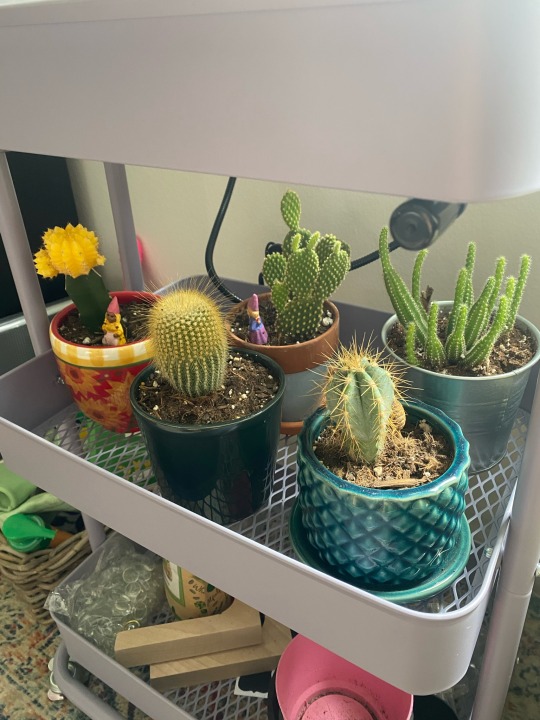
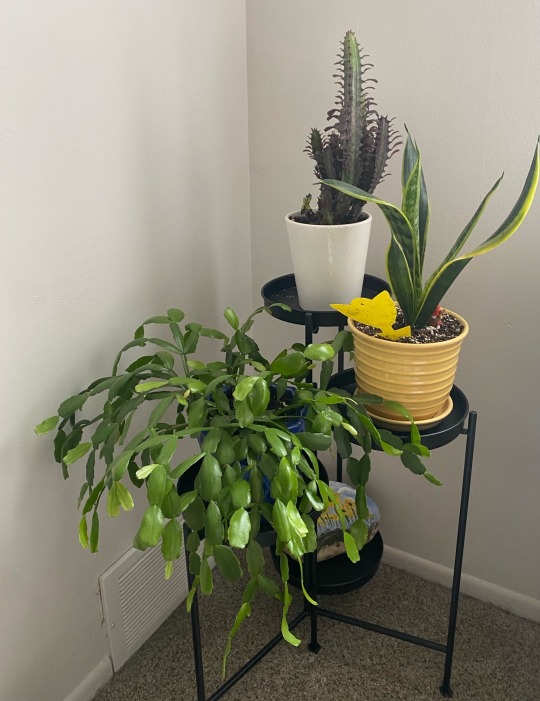
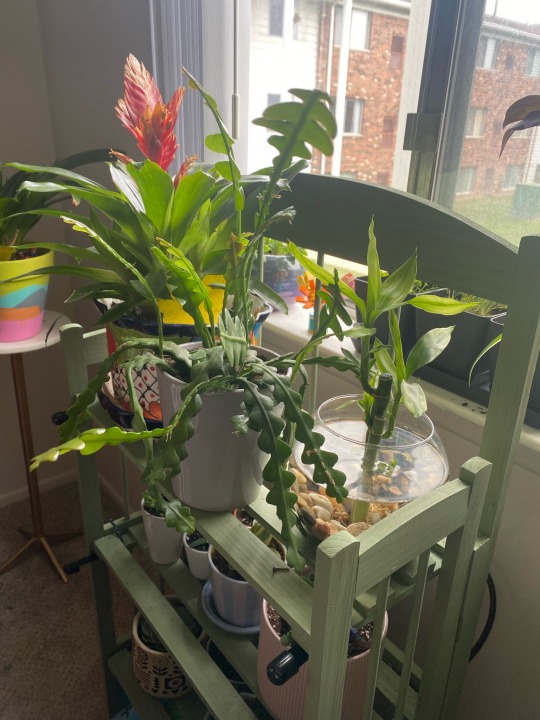
How fucking cute are they though? 🌿🪴🧚🏼
#plants#big plants#my plants#little plants#house plants#potted plants#hanging plants#indoor plants#succulents#cactii#bamboo#lucky bamboo#bromeliad#christmas cactus#snake plant#African milk tree#peanut cactus#moon cactus#angel wing cactus#monks hood cactus
25 notes
·
View notes
Text
Simba - African Milk Tree

He’ll be moved outside soon! I’m sure he’ll love being outside with all the sun again.
21 notes
·
View notes
Text

Euphorbia trigona / African Milk Tree at the Sarah P. Duke Gardens at Duke University in Durham, NC
#Euphorbia trigona#Euphorbia#euphorbiaceae#African Milk Tree#Spurge#Plants#Nature photography#Succulents#photography#photographers on tumblr#Sarah P. Duke Gardens#Duke Gardens#Duke University#Durham#Durham NC#North Carolina#🌺🌻
1 note
·
View note
Text

So Cal gets out of the Mantis and I'm like...is that a euphorbia?????? It's pretty close to African Milk Tree/Euphorbia trigona. The shape of the stalk actually reminds me a bit more of dragonfruit, though.
Euphorbia trigona via wikipedia

Dragonfruit via wikipedia

As a note, most very "cactus like" euphorbias are native to Africa and not the US. Dragonfruit is native to the Americas.

12 notes
·
View notes
Text
Seeds of Love — Oikawa Tooru / Reader



Pairing — Oikawa Tooru / Reader
Word count — 2,606
Content warning — none
Summary — You and Tooru’s teammates have a running gag that any plant named after someone in your life is cursed to suffer a terrible fate under your boyfriend's notorious black thumb. And, no matter how much you try to save them, your boyfriend always manages to transform them from thriving greens to shriveled-up twigs faster than you can say 'photosynthesis'.

“No way,” you state bluntly. “You’ll kill it. Again.”
As you hold the tiny pot that vaguely resembles Bulbasaur — albeit a bit misshapen and a completely wrong color, — you squint your eyes in concentration, trying to assess if it would match with any of the succulent cuttings scattered around the apartment. Out of the corner of your eye, you catch Tooru jutting out his lower lip like a sulky child. His doe-like eyes wander around, anxiously shifting between you and the fluffy plant he's clinging onto for dear life.
His voice takes on a high-pitched, pleading tone. “Pleaseee, I'll love it and care for it like it's my own child,” he whines, wrapping his arm around your shoulders and shoving the wooly plant in your face. The fuzzy oval-shaped leaves tickle your nose, and your face scrunches up as you try to hold back a sneeze.
You really want to say yes — the plant is certainly cute, adorable even. In fact, you're already envisioning the perfect spot for the Kalanchoe, nestled snugly on the shelves between the cotton-scented candles and the graduation photos from high school and university.
But deep down, you know that no matter how much Tooru insists he'll take care of the plant, it'll end up like all the others: drowned or parched, a mere shadow of its former self. You can almost hear the poor thing gasping for air, crying out for a drop of water or a ray of sunlight to save it from Tooru's notorious black thumb. You've lost count of the number of succulents and cacti that have met their untimely demise under his care.
(It's like he has a special talent for killing plants, despite his best intentions.)
Tooru pleads with you once more, "Please, this time I'll let you name him."
You give him a skeptical look. "Tooru, darling, I can't handle giving it a proper name and then watching you unintentionally murder it a month later. My heart just can't take it."
He lets out a pitiful sigh, slowly moving the fuzzy plant away from your face. You look back and see him holding it like a baby, cooing. His lean fingers are trailing gently along the oval-shaped leaves.
He looks so content, his eyes shining under the unforgiving fluorescent lights.
"Alright," you finally give in, avoiding his handsome, sun-kissed face. But you can see his expression lighting up with excitement from the corner of your eye. "But remember, I get to name it like you promised. No take backs."
The thing is, you adore giving your plant babies human names. The silly tradition began, along with your soul-crushing, debt-inducing plant addiction, when, for your four-year anniversary with Tooru, one of his Argentinian teammates gifted you a large Lacy Tree Philodendron that took over a third of the apartment's tiny hallway space.
But you knew your dear boyfriend had a talent for plant homicide. Back in your high school days, you'd find yourself helping his mother tend to their modest garden while he stayed inside, sulking when she would scold him for killing yet another perennial.
So, despite being grateful for the generous gift, you couldn't help but feel a bit uneasy about the fate of the plant under Tooru's care. After all, you still had the sad remains of an African Milk Tree cactus barely standing on the balcony, a victim of his infamous killer touch.
Somehow, against all odds, the philodendron managed to stay alive. A few months later, during a celebratory dinner with Tooru's closest teammates at the start of the league season, you found yourself a bit tipsy and brought up his plant-killing tendencies. You recounted the time when he had fallen on the Tree Philodendron, exhausted from training, and accidentally snapped off two three leaves, leaving the poor plant struggling to recover. Everyone at the table laughed, and Tooru defended himself, claiming that he had simply been giving the plant a haircut.
Carlos, the gift bearer, had laughed, explaining that, coincidentally, that was around the time he got a broken arm after an unfortunate skiing accident in the Andes, near Cerro Chapelco. After another full glass of plump and smoky Malbec wine later (all thanks to Leon and his vineyard), and more apparent coincidences, the precious Philodendron got its official name — Carlinhos.
From that point on, it became a sacred ritual and an inside joke between you and Tooru's teammates to name each new plant after someone in your life and eagerly wait for any coincidences between the plant and its namesake.
(Such as the unfortunate IKEA-bought Cascade Palm named Lola after Dolores, the evil fifth-floor neighbor who tended to throw her garbage out the window onto the street. A week and a half after Tooru had accidentally overwatered the palm, Dolores had to move out, never to be seen again.
Or the pink succulent cutting, lovingly nicknamed after Leon’s pinky finger. Both the succulent and Leon's pinky had suffered minor injuries, coincidentally, just days apart.)
"Come on, plant hoarder, let's bounce before you bankrupt us," Tooru teases, as you add the fuzzy succulent to the overflowing shopping basket filled with an eclectic mix of trinkets. Your boyfriend grins, his eyes crinkling in amusement, and your heart flutters at the sight.
Despite his notorious black thumb, he's just as enamored with the plants as you are. In fact, he's the one who constantly brings home new green babies, filling every nook and cranny with vibrant colors and sweet fragrances. You often catch him reading plant care books or watching videos on plant propagation, determined to learn more and improve his skills.
At the cash register, Tooru places the last plant on the conveyor belt and shoots you a wink, his lips stretched into a cheeky grin. His infectious energy never fails to lift the spirits of those around him, and even the two elderly ladies standing a few meters behind you can't resist commenting on how happy you two look together. They start gushing in rapid Spanish, and though you can't catch everything they're saying, you hear enough to know they're describing the two of you as a picture-perfect couple.
Your cheeks flush in embarrassment. Back in Japan, you were always the shy one, avoiding any public displays of affection, no matter how small. The old ladies in your neighborhood were always on the lookout for any potential gossip fodder, and anything from a simple kiss on the cheek to sneaking out at midnight for a game of volleyball would set off the gossip mill.
The cashier finally rings up the last item from your cart, and you start shoving the items inside your bags. Most of the trinkets fit snugly inside Tooru's backpack and the extra shopping bag you brought, except for the three large plants you ended up buying.
(Which you will proudly hug and carry to the car.)
Tooru effortlessly lifts the bags, and you both exit the store, elated by your successful shopping spree. As you walk towards the car, you steal glances at him, and your heart swells with affection. Even after all these years, it still feels surreal that he is your partner, your closest confidant, and the only one for you.
Inside the car, the larger plants are carefully secured in the backseat with seatbelts, but the tiny kalanchoe stays in your lap. Its velvety leaves tickle your fingers, and you can't resist the urge to caress them throughout the ride.
When the car rolls to a stop at a red light, Tooru glances at the furry plant and asks, "What should we name this little dude?"
“We’ll find out soon enough, when inspiration strikes me.” You stick your tongue out, and your boyfriend answers by softly flicking your forehead.
That evening, you and Tooru make a simple dinner and enjoy it with a couple of glasses of cheap store-bought wine. As the evening progresses and the alcohol takes effect, your playful mood only grows, and you can't wait to catch up with the rest of the Seijoh Four during your monthly meetup. Eager to see your friends, you log onto Discord earlier than planned and head over to Tahakiro's gaming server. To your surprise, he's already there, his camera on, displaying his strawberry blond hair and cheeky grin.
Tooru bursts into the channel and greets your pink-haired friend with a boisterous "Makki!"
You give him a playful jab as he turns on his laptop's camera and takes over the screen, giving a cheerful wave to your best friend. The three of you immediately launch into a lively gossip session about life, and within a few minutes, Hajime joins in the chat, his face a bit fuzzy due to his old camera.
As Iwaizumi’s pixelated face pops up on the screen, you can't help but tease him.
"Hey Iwa-chan, are you broadcasting from a potato?" Tooru jokes. Despite the poor video quality, you can clearly make out Iwaizumi's raised middle finger.
Moments later, the final member of your little Seijoh alumni group joins. Issei's tired-looking face appears on the screen, bathed in the neon glow of his gaming setup.
“What's the plan for this lovely morning slash evening? Are we gonna kick some butt in CS:GO or run for our lives in Dead by Daylight?" he asks, his voice slightly hoarse.
You pause for a moment, considering your options. "Hmm, I'm feeling a bit too exhausted for that. How about some peaceful farming in Stardew Valley?"
Takahiro is quick to agree, jumping in with a condition, "Stardew is fine, but only if we play the Wilderness map. And just to be clear, I am not sharing my resources with Tooru this time."
Your boyfriend bristles and pouts as he turns to face you, expecting you to side with him.
You interject, "Tooru, darling, let's be real here. Choosing Joja Mart over the Community Center is a rookie mistake."
"But I wanted the achievement!" he whines.
You and Tooru quickly load up the game on his laptop, creating your shared character and setting up the farm. You send out invites to the others, and they set off to work the moment they join. Issei takes charge of plowing the land, while Makki becomes the farming guru and heads to Pierre's shop for extra supplies. Meanwhile, Tooru, still pouting like a grumpy toddler, watches as you and Hajime break the rocks and chop down the trees.
You spend the majority of your playtime being a love-struck fool, showering your favorite character with gifts and compliments, much to the annoyance of your boyfriend. You can practically feel his eyes rolling every time you let out a high-pitched squeal after leveling up your friendship with your in-game partner. Whenever you switch, you’re stuck watching him gift your in-game partner with soggy newspaper pieces and driftwood. He ends up getting himself killed in the mines, and you're quick to fall behind on money.
“Yes,” you let out a squeal of excitement as you exit the cabin and a cutscene starts to play. You watch as your character receives a pet from Marnie. “Guys, guys, what should I name him?”
“Nomi.” Issei suggests, earning an eye roll from you.
“Issei, I am not naming him ‘flea’.”
“Cream puff.”
“Assikawa,” Hajime pipes, and Tooru gasps.
"Iwa-chan, why do you have to hurt me like this?" he exclaims dramatically, collapsing onto the couch with a hand over his heart.
You laugh and type in the name "Assikawa," ignoring your boyfriend's failed attempts at keyboard mashing. As the cutscene ends, Makki and Mattsun cheer and gather around the adorable creature, giving it as many pats as possible.
A while later, Makki reluctantly leaves the game, but stays in the voice call, and starts ranting about his mind-numbing recent job at a local konbini. Issei, unfazed by his friend's usual complaints, barely spares him a glance as he delves deeper into the mines, his pickaxe ready to strike at any glimmer of gold ore. But you're intrigued — you haven't gossiped with your friend in a while — and you’re curious to hear more about this job, despite knowing of his job-hopping tendencies.
“---the old hag keeps trying to give me double shifts, even though I’ve told her a million times I have another part-time job,” the strawberry blond continues his spiel. "She must hate me or something," he gripes. "I swear, I've worked more night shifts than there are days in the week!"
"What's her name?" you ask, a mischievous smile spreading across your face. Makki looks at you with confusion as you continue, "Tooru, what if we name our new plant baby after her?"
“No,” your boyfriend deadpans. You pout, making your best puppy eyes at him, but he doesn’t budge. You try to win him over by moving closer and giving him a quick peck on the lips, but it only earns you a chorus of exaggerated retching sounds from Maki and Issei.
You sulk. “Fine then. Our baby’s name will be Assikawa then.”
Tooru's eyes widen in disbelief. "You wouldn't dare," he says, a hint of panic creeping into his voice.
"Oh, I absolutely would."
Tooru looks at you for a moment, considering his options. “Not even if I kiss you like this?” He leans in, his lips brushing softly against yours.
More loud retches come from the laptop's speakers, and you and Tooru pull away, embarrassed.
"Uh, well, see you guys next week," you say, trying to conceal your mortification. "And good luck at work, Makki."
Hajime rolls his eyes, but there's a small smile on his face. Issei just laughs, clearly amused by the whole situation.
You do end up naming the innocent plant Assikawa. This leads to your boyfriend becoming overly protective of it, treating the innocent plant like a delicate newborn and fearing the wrath of the Plant Gods (and you, mainly you) if anything were to happen to it.
And it’s all fine for the first two-three weeks.
Each morning before heading to training, he would plant a gentle kiss on your forehead as you lay half-asleep in bed. After that, he would proceed with his typical morning routine, taking a quick shower before packing a light meal for you, followed by preparing his own nutritious breakfast and savoring a cup of black coffee. Just before leaving the apartment, he would give a tender pat to the fluffy plant, using it as a good luck charm.
That is until one morning, after a night of heavy drinking with some of his teammates, he staggers out of the bedroom, his head throbbing with pain. He makes his way towards the bathroom, his vision blurry and his mouth feeling like cotton. His lips are dry and chapped, and he stumbles, reaching out to grab something to steady himself.
You are abruptly awakened by a noise that isn't the birds chirping outside. You jolt awake, startled, heart rapidly beating. And when you leave the confines of your bedroom, your own head pounding, you're greeted by the sight of Tooru lying on the floor, shielding his face with his arms. The second-hand wooden shelf is barely holding up, one of its legs broken. Wet soil clumps are scattered on the soft carpet, and crumpled magazines are scattered around.
The fuzzy plant is barely visible, hidden under your boyfriend's large frame.
“Tooru!” you shout, rushing to his side and frantically checking for any injuries. “Tooru, are you alright?”
He groans in pain as you help him sit up and brush the dirt off him. “My butt hurts,” he complains, massaging his behind. “This is all your fault, Assikawa, for cursing me.”

Author's note: first time writing and posting a fanfic; i know there's absolutely no plot in here, but hey, i had to somehow indulge in my love for plants & writing xd
Thanks for reading 💚
#haikyuu#oikawa tooru#haikyuu x reader#haikyuu x you#haikyuu x y/n#hq x reader#oikawa x reader#oikawa x y/n#oikawa x you#reader insert#haikyuu imagine
53 notes
·
View notes
Text
Brazilian ghouls✨ Part 1
(This is more like history and miscegenation lesson)
And this is a very, very long post
I'm really bad at this kind of thing (I'm actually not smart), but I really like my country and ghouls, soo, here we go
• Ok, Let's start with vital points, Brazil was a major distributor of coffee throughout the world for a long time and thanks to colonization our culture is extremely mixed, as most families have several descendants from different nationalities such as: Portugal, Africa, Japan, Italy, Germany, Dutch, Lebanon, between others, and of course a very rich and explored culture and diverse villages of original peoples that to this day are treated as if they did not exist
• Anyway, my main point is that here, it is extremely common to have multiple ethnicities and nationalities mixed in the blood. And this would be no different with ghouls
• I'm almost certain that the population of mixed-race ghouls in Brazil would be higher than anywhere else on the planet.
• First, following @tg-headcanons 's headcanons, before colonization, some indigenous villages which were found far from the coast and more in the center of Brazil (Jes) were able to coexist peacefully with ghouls, and since that time, there were already mixed relationships
• The villages were independent of each other, so there were also ghoul-only villages
• As Brazil greatly developed planting and agriculture, that the original people were capable of making recipes, using feasts from bodies collected in battles with rival villages, and specific recipes that used methods to make tubers edible for ghouls, such as cooking in blood, they also used breast milk, bones, and locks of hair in recipes or in consumption
• Brazil had a subspecies of ghoul "Suú-suúTa-ta" (from Brazilian Tupi, something like "fire chewer", capable of throwing the kagune on fire, which generated countless legends such as "boi tata" (a giant fire snake) and the curupira (the protector of the forest, a boy whose hair catches fire and his feet are inverted, he runs through the woods) These ghouls did not live in communities, but roamed the forests and lived in solitude, which ended up making them extinct.
• The native ghouls' hunting method was very native, hunting ghouls could spend hours or days on top of trees, waiting for prey, they imitated Brazilian animals, such as the jaguar (onça pintada), Attacking with a single bite to the base of the skull and crushing, or like anacondas (sucuri) or boa constrictors (jibóia), wrapping the prey with the help of the kagune and crushing the bones
• I think the bikaku would be the most common kagune in Brazil, the Ukakus in second place, would use the crystals as arrows
• Some ghouls could ingest sugar cane instead coffee
• Ghouls had a less developed language, mostly just sounds and limited words, without advanced grammatical training, the hunting ghouls were even quieter
• The ghouls attacked people from rival tribes, and the mixing of species began with marriages and unions between villages, to establish peace.
• These unions were usually with a female farmer or healer, and a hunting ghoul that was normally integrated into the village
• When a pregnancy occurred in these unions, there were rituals and great expectations, women began to consume meat that previously was only served to their husband and therefore, many of them discovered how to integrate the human and ghoul diet together.
• Crossbreeds between ghouls and humans were usually very strong and respected and were also influenced to procreate, which led to the beginning of miscegenation between humans and ghouls.
• Then, we have colonization, many African ghouls were brought along with others on slave ships, and many European ghouls took the opportunity to escape hunting and burning in the Europe and they came in caravels
• As colonization progressed, native ghouls were burned or drowned, those who did not have ties and families with humans hid in the dense forests of the Amazon
• European ghouls usually looked for ghoul slaves as well, (but they bought human slaves to eat) and were also surprised by the presence of half-ghouls
• African ghouls and native Brazilian ghouls used to always find each other strange, but when they were subjugated together, the ghouls began to learn about each other and the different cultures
• Miscegenation advances with ghouls, mixing not only nationalities, culture, but also subspecies, hunting methods
• Cuisine also advances, European ghouls were able to ingest only coffee, native Brazilian ghouls were able to ingest sugar cane and tubers prepared specifically for ghoul consumption and African ghouls could ingest some types of peppers or beans
• Natural mestizos had even fewer dietary restrictions, however, their kagunes developed less
• When people began to mix, European, native or African ghouls, the characteristics of African mimics became increasingly common, many European ghouls wanted their heirs to inherit the strong jaw and Brazilian bikaku
• However, the European elite stopped, or at least tried, with the mixture, when their heirs did not inherit Brazilian characteristics, at least not the ones they wanted, it just created good old eugenics and didn't stop other ghouls from banding together despite ethnic and genetic differences
• Little by little the ghoul community in the country increased, as the centuries passed, Brazilian culture shaped itself and became increasingly welcoming, ghouls were not just monsters, but part of the community and society
• European ghouls stopped living in the shadows, assuming themselves as ghouls when they achieved great purchasing power, this occurs in the 19th century during Brazilian independence
• Mestizo, African and native ghouls formed a strong alliance and built a culture, along with the enslaved humans at the time
• Many enslaved humans saw ghouls (except European ghouls) as heroes, since many ghouls rebelled and killed the plantation owners
• Ghouls were not excluded from Brazilian culture, but included in its daily life, culture, history, religion, folklore
• As more people immigrated to Brazil and ghouls from all over the world began to learn about the country of coffee and the strong, mixed-race ghouls, many ghouls from different countries started moving to Brazil
• This happened in the 19th century, when Brazil achieved "independence" from Portugal and became a monarchy (with the fucking Portuguese family in charge), It was an important century, Brazil experienced the success of coffee farming, abolished slave labor and received several immigrations
• With all these changes, the ghoul community grew even more and the mestizos had the chance to explore their kagunes, managing to develop them
• Almost every Brazilian has a relative who is a mestizo or ghoul
• Ghouls are common in Brazil, they are part of Brazilian blood, however, like any minority, many of them still suffer from prejudice and stigma
Well, that's the general picture of how ghouls developed in Brazil, there are probably errors and inconsistencies, but I'm refraining
I'm going to do more parts, because I had more fun with it than I imagined, so here are some themes that were still covered in Brazilian ghouls ✨
Creation of preventive vaccine for ROS
Mestizos, kagunes and Brazilian categorization
Regional ghouls
Ghoul Inclusion Programs and Laws
+ Violent and marginalized ghouls, illegal meat consumption, Brazilian ghoul elite
Probably some shit, because we Brazilians are very good at doing funny things
#tokyo ghoul#tokyo ghoul headcanon#Brazilian ghouls#a history lesson#I'm not good at history#an attempt to understand ghoul genetics#I'm not good at it either#please#Tell me if there is something about Brazilian culture that you don't understand#Or if it's confusing and stupid
23 notes
·
View notes
Note
Hi :) It's the crazy plant idea lady who called Serim a twink that waters dead plants again. Sorry about this response being kind of wack. I had to tend to my Sue Sylvester fan page account. (It's a long story for another time). OKAY TO THE MAIN EVENt
Thank you for calling my rant cute (HUGS). Okay, but now, fr, let's get into this.
When Ning first discovered Serim watering a dead plant, she waited until she was done watering and caring for said plant and threw it away (bad move, Ning). Around 20 minutes go by, and Serim is just screaming ANGELICA, OH ANGELICA, WHERE ARE YOU. Ning is confused to see Serim lying delirious on the floor where the plant used to be. Ning then tells her that she threw the plant away. Serim then proceeds to cry into Ning's shoulder. Hence, Ningning lets Serim water dead plants.
PLANT SNSD. Let's just say Taeyeon is hanging on for dear life (Serim parys to it every day, Why? I don't know; I don't make the rules). I feel like Serim has a corner of her apartment designated for her snsd plants. All of the snsd plants excluding 2 are alive and well. One is obviously Taeyeon, and the other is none other than..... Yuri, the African milk tree (Euphorbia Trigona). We will never know why Serim has this in her house. Let's just say that Taeyeon looks like a god compared to this poor plant.
Yes, ningning gets into plants only for her first plant to get killed by none other than the gay herself, Serim. Let's just say Serim and Jennie had a bit too much soju.... and serim thought it was a good idea to give Ning's baby plant a little drink, too. Ning, when she later went to Serims apartment, found her plant... dead, killed by soju.
Weedville - A love story between a twink gardening teacher and a confused idol named Ningning who doesn't know how she ended up in this odd girl's class. Ning then discovers that her teacher is delusional because she talks to the plants and sings songs (I imagine Serim randomly singing Gangnam style to plant Taeyeon).
Also, this was so fun to write. I usually get so sick of writing that I need to add Sid the Sloth quotes to make me feel better.
Also, could you, perchance, can create an anon name for mauh (hair flip) I'm to lazy too, or we can just stick with serim and ning twink agenda lady.
hello again, sweetheart :) i don't know what you talking about but i truly love sue sylvester 👍🏻
what do you mean ningning threw away angelica? can aespa stop ruining serim's life? she's gonna collapse 😭 also, serim theater kid agenda is just getting stronger bc why is she going "oh angelica, where are you?" and throwing herself on the floor like okay ROMEO. ningning seeing this and getting too traumatized she just lets her do her thing
so there's two that are dead and gone? sunny and hyo i'm so sorry, i bet serim tried saving you 😔 i didn't remember what an african milk tree was so i searched for it and i'm bawling this is yuri 🫴🏼 (well, this is yuri if serim succeeds in taking care of it)



SHE WATERED A PLANT WITH SOJU ??
WHAT DO U MEAN WEEDVIL- gangnam style of all songs, i'm crying 😭 i see her ass going wow fantastic baby to the plants
i don't actually know what parts of what you're saying are true anymore i picture you as an talking unicorn at this point
well, TALKING UNICORN ANON or just 🦄 anon 🫴🏼
thanks for this, i laughed so much reading it, you're nuts 🙏🏻🫂
8 notes
·
View notes
Photo

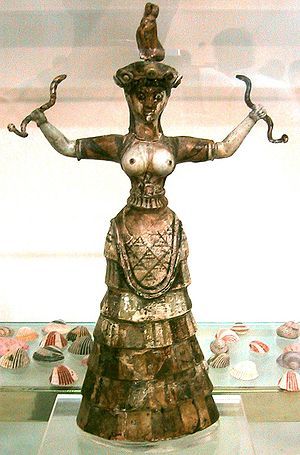
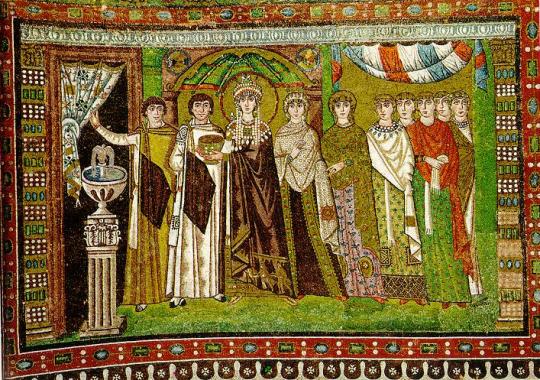


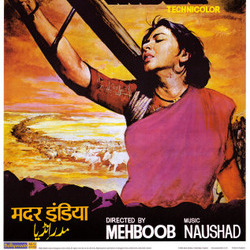



mother
1 'artist' unknown Venus of Willendorf (c28000-25000BCE) limestone http://smarthistory.khanacademy.org/nude-woman-venus-of-willendorf.html
2 artist unknown snake goddess, Minoan Civilization, Crete (c1600 BCE)
3 artists unknown Empress Theodora, mosaic in church of San Vitale, Ravenna, Italy (6th Century) http://smarthistory.khanacademy.org/byzantine-justinian.html
4 Ana Mendieta (1948-85) Cuba/ USA Silueta �� search at http://www.moca.org
5 Piero della Francesca (1415-92) Madonna of Mercy, detail (c1460) oil and tempera on panel
6 poster from Mehboob Khan's 1957 film Mother India http://www.youtube.com/watch?v=yNFPjvT5PJM http://www.youtube.com/watch?v=JzJHnADcpa8
7 Cindy Sherman Untitled (1989)
8 Maïmouna Patrizia Guerresi () As a photographer, sculptor, and installation artist, ‘Maïmouna’ Patrizia Guerresi reveals unique and authentic sensibilities in her narration of the beauty and subtleties of racial diversity and multiculturalism. Over an established career, she has developed her own symbolism, which combines cosmological and ancestral traditions belonging to various European, African, and Asian cultures. Her personal commitment to Baifall Sufism has led her to produce an aesthetic that is able to bridge time, space and civilisations, as well as figuration and abstraction.
The human body is seen as the nucleus and temple of the soul, a place that houses a delicate, higher awareness; the very conduit for encompassing natural and cosmic forces. More about mysticism than any singular religion, her work is visionary in that it restores those elusive qualities of sacredness and unity in our frequently dehumanising and fragmented contemporary visual world. Her classic iconographic style explores the universality of human experience and reclaims the often hidden nurturing powers of feminine energy. Presented as a kind of free flowing epic, the viewer is left to read the significance of her imagery and quietly meditate on its potential to personally engage with its audience. As if her figures were speaking directly to each one of us.
From her earliest experiments with the physicality and archetypal imprinting of the psyche, through to her latest, evermore metaphoric ‘inner constellations’, Maïmouna insists on a cross-cultural discourse and an expansion of the boundaries that normally dictate our individual attitudes. She invites us to see further and to look deeper – past skin colour, preconceptions, and ethnic landscapes – into the wider paradigm of inclusion. She leads us through apparently simple notions of dimensionality into the exquisite, mystical and fragile complexities of life from within. Rosa Maria Falvo,writer and curator, www.chobimela.org
Perspective on the relationship between women and society, with particular reference to those countries in which the role of women is most marginalized. For over twenty years Guerresi’s work has been about empowering women and bringing together individuals and cultures in an appreciation for a context of shared humanity, beyond borders – psychological, cultural, and political. She uses recurrent metaphors such as milk, light, the hijab, trees, and contrasting white on black to create awareness of the vital unifying qualities of the feminine archetype and its special healing potential. Guerresi’s art is uniquely authentic. Her work is inspired by personal experience and cultural contexts that reference universal myths, the sacred realm, and the female condition, all of which are seen as vital expressions of the human form: an essentially spiritual and mystic body. Through photographs and videos of silent, austere, veiled women in domestic scenes and individual poses, her work functions as both metaphor and provocation. Guerresi’s images are delicate narratives with fluid sequencing, as well as rational analyses: women dressed in white, enveloped in chadors, fixed within their own tradition and isolated from and by it in the contemporary world. Her Fatimah image suggests the woman as Mother- Earth supporting us in the original energy cycle of Space-Universe-Infinity. www.maimounaguerresi.com
9 The Cholmondeley Ladies (c1600-10) oil paint on wood 886 x 1723 mm British School 17th century (1600‑1699)
search @ www.tate.org.uk
#mother#earth#venus#figure#figurative#symbolism#representation#mendieta#minoan#mary#della francesca#willendorf#sherman#Guerresi#spiritual#mother india#cholmondeley#snake goddess
14 notes
·
View notes
Text

THINGS TO DO: LET’S EXPLORE NEW ORLEANS, LOUISIANA!
New Orleans is a Louisiana city on the Mississippi River, near the Gulf of Mexico. Nicknamed the "Big Easy," it's known for its round-the-clock nightlife, vibrant live-music scene and spicy, singular cuisine reflecting its history as a melting pot of French, African and American cultures. Embodying its festive spirit is Mardi Gras, the late-winter carnival famed for raucous costumed parades and street parties.

Explore the Historic French Quarter
The French Quarter is always a must-do, any time of year. As the city’s oldest neighborhood, the Vieux Carre is packed with gorgeous architecture, loads of history, a wealth of food and music, and a cast of characters including long-time residents, chatty tour guides, and talented street performers

Take a History Tour of the Garden District
Upriver from the French Quarter lies the Garden District. Take a tour of this neighborhood’s grand mansions and historic cemeteries. The houses and history are a draw, but the neighborhood also offers a wealth of shops and cafes, as well as Commander’s Palace, one of New Orleans’ best restaurants.

Relax at the New Orleans City Park & Art Museum
New Orleans City Park offers a lovely respite from the city and is a great place to spend an afternoon, according to recent visitors. Take a nature stroll through the 10-acre New Orleans Botanical Garden (which boasts 2,000 different varieties of plants) or peruse the art hanging in the adjacent New Orleans Museum of Art.

Tour the New Orleans Jazz Museum
It's only logical for New Orleans to be home to a jazz museum, for this is the city where the musical genre was born. At this comprehensive repository of artifacts from the very beginning of the 20th century, you'll see and hear the history of jazz. The museum also presents more than 365 concerts a year and hosts educational programs on the city's legends, from Louis Armstrong to Al Hirt, Louis Prima and more.

Catch a Ride on the Algiers Ferry
Hop aboard the historic Algiers Ferry to feel the power of the Mississippi firsthand. The short ride on this commuter ferry will give you an amazing view of the city and a few minutes to be one with the river.

See the City on the Streetcars
New Orleans’ streetcar system has been rolling since 1835. While you can no longer ride the Desire line made famous by Tennessee Williams, the existing lines offer a great way to see the city. The newer red streetcars run out to Mid-City, while the older, original green cars take you down historic St. Charles Avenue, past beautiful houses in the famed Garden District and Audubon Park.

Cool-off at the Aubodon Zoo
Spend an afternoon at one of the top zoos in the country. The Audubon Zoo has world-class exhibits featuring animals from Asia, Africa, and South America. You’ll also see seals, reptiles, and a glimpse of the Louisiana swamp. Located behind Audubon Park, the zoo is dotted with majestic oak trees (keep an eye out for resident peacocks). In the summer, the Cool Zoo water park offers a respite from the heat.
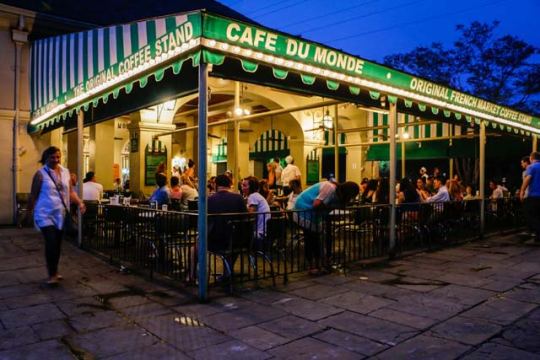
Get Classic New Orleans Fair at Cafe Du Monde
The Original Cafe Du Monde Coffee Stand was established in 1862 in the New Orleans French Market. From beignets to café au lait, Café Du Monde is a New Orleans tradition.

Shop the French Market at the Colonnade
The French Market is a market and series of commercial buildings spanning six blocks in the French Quarter of New Orleans, Louisiana. It is one of the oldest trading posts in the US. Get your milk, bread,and eggs, along with unique souvenirs.
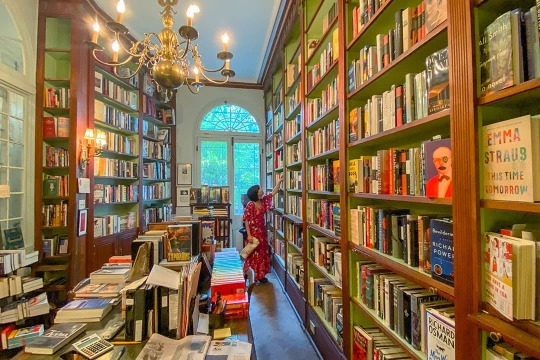
Check out Faulkner Books
Faulkner House Books is located in the heart of New Orleans’ beautiful and historic French Quarter, just off Jackson Square, behind the Cabildo and opposite St. Louis Cathedral’s rear garden. Founded in 1988 by attorney Joseph J. DeSalvo Jr. and his wife Rosemary James, Faulkner House Books is a sanctuary for fine literature and rare editions, including, of course, books by and about Mr. Faulkner.

Get Adventurous with the Swamp Kayak Tour
The Manchac Swamp tour is a secluded, calm, and pristine tour. If you are searching for a gorgeous, natural, and picturesque kayak swamp tour – this is your tour! Deep in New Orleans bordering swamps enjoy calm waters with maybe the occasional wildlife spotting.

Join a Alligator Tour
Jean Lafitte Swamp Tours is located just 15 minutes from New Orleans and offers swamp and airboat tours of Louisiana's back country. They guarantee you will get upclose with the swamp’s best residents, alligators.

Dare Yourself with the Voodoo Mystery and Paranormal Tour
This New Orleans voodoo and mystery tour takes you into the Big Easy's history of vampirism, occult activity, paranormal occurrences and even piracy. Hear tales of haunted buildings, lost treasure and documented sightings of ghosts and vampires as you explore. Use of pro ghost-hunting equipment is also included.

Get in on a Pub Crawl
Explore the famous Magazine street pubs and bars with this one of a kind pub crawl. Come with your walking shoes and an excitement for the nightlife. Open 7 days a week.
10 notes
·
View notes
Text

Movies I watched this week (Year 4, week 5)
6 more by Icelandic Hlynur Pálmason (After ‘Godland’ and ‘Seven Boats’):
🍿 White, white day is about a grieving policeman whose wife died in a car accident. A masterful feat of slow film making, with unusual choices in its subtle direction. The man renovates a house, takes care of his cute granddaughter, and then, (as in 'The Descendants'), he discovers that before she died, his beloved wife had an affair with some guy. A stunning story of grief, resignation and acceptance. 10/10.
🍿 A painter is a 30-minutes unexplained riddle, about a conceptual land artist, harsh and isolated. A slow meditation about art and relationships, told via stark visuals and few words.
🍿 During Corona, Hlynur's 3 kids were building a tree house in Nest. The camera was fixed at one spot (in 99% of the cases) and recorded hundreds of short clips over a full year of changing seasons. It's absolutely the most captivating 22 minutes of film I've seen this week. (Pálmason used the same technique at the beginning of 'White, white day' recording the house over a long period of time). 10/10 (In spite of watching it with Spanish subtitles only).
🍿 A day or two, a painful, lyrical short about a boy who is left alone in a neglected farmhouse. Inexplicably traumatic. 9/10.
🍿 Milk Factory is basically a home movie with the same little cute girl (his daughter from 'Godland' and all the others) running through a modern gallery at the small fishing town of Höfn, where they live.
🍿 Fortunately, I saved his debut feature Winter Brothers to the very end. Had I started with this tedious, incomprehensible artsy piece first, I would never have discover the rest of his fascinating work. The story takes place in a metaphorical underground, a Siberian-type inferno, where chalk-faced miners use pickaxes and shovels to dig for something in darkness and noise. 2/10.
Now that I've seen everything he's done, 3 features and 5 shorts, my top three of his are: 1. A white, white day. 2. Nest. 3. Godland.
🍿
Like the little heartbroken girl in 'White, white day', mourning the death of her grandmother, (and like the kids in the Danish 'Beautiful Something Left Behind'), Ponette is a 4-year-old girl who must come to terms with her mother's death in a car accident. (Photo Above). This sad and simple story features the most phenomenal performance by a child actress I've ever seen. The grief on her face was absolutely devastating and hard to watch. It's also hard to imagine how the director, Jacques Doillon, managed to coax such genuine emotions during the unbroken, long takes. 9/10.
🍿
Exterminate All the Brutes, a 4 hour meditation about the roots of colonialism, racism and genocide. My first by Haitian documentarian Raoul Peck. An unflinching examination of the shameful atrocities on which our modern life is established. The many genocides that followed the European conquests of the world. The twin principals on which the Americas were founded; Extermination of all the native nations, and the exploitive slavery of kidnapped Africans. Painful truths.
There were some chapters I did not know: That White supremacy was codified for the first time in 1449 with the help of the pope, the king and the Spanish Inquisition. That the first successful slave revolt against colonialism was the Haitian Revolution of 1791. That the Code-name 'Geronimo' used for the killing of Bin Laden was simply one more time of using Indian names for America's worst enemies, all part of the need to 'Exterminate all the brutes'.
The documentary itself was in parts too fragmentary, used too many symbolic reenactments, and employed too many personal anecdotes, for my taste. Still, it's a must see warning. Trump makes his entry only at the last hour. 7/10.
🍿
Only my second by independent writer-director John Sayles (after 'Lianna'), the neo-western Lone star. Real stories of the Anglo, Tejano, and Black communities in a small Texas border town. Also a new sheriff who investigates an old skeleton found at a firing range, and discovers old secrets about his dad and his old sweetheart. Unforgivably humane.
🍿
Gun Crazy, a second-tiered, pulpy Film Noir, a precursor to Bonnie & Clyde and any other 'Outlaw couple on the run' stories. He's obsessed with guns since his childhood. She's high on deadly adventures. After falling in love at a carnival, they embark on a crime spree across America together. In 1950 that mean that the murderous fugitives will die at the end. Strangely, this urban crime caper ends in a dreamy Tarkovski swamp.
🍿
Another Noir, Elia Kazan's medical thriller Panic in the Streets, taking place on the waterfront, this time in New Orleans. Jack Palance debut performance. I watched it after reading the article The Myth of Panic, which analyses how the 'Elites' uses the fear of 'the crowd' to always control narratives in times of mass disasters, The Spanish influenza, The London Blitz, the Atomic age, AIDS, Corona...
🍿
Falcon lake is the charged debut feature of Canadian Charlotte Le Bon. It's a lovely coming-of-age story about a 13 year old boy who falls for a 16 year old girl at a lake cottage in Quebec. He's innocent and caring, until he fucks up and becomes a ghost. Accomplished film making with an indecisive finale. 7/10.
*Woman Director
🍿
"Goddamn-dipshit-Rodriguez-gypsy-dildo-punks. I'll get your ass."
First watch: LA cult movie Repo Man. I guess you had to be there at the time to appreciate its weird punkness. But even though I stuck to the very bitter end, every moment made it worse. Rambling, disjointed, uninteresting. 2/10.
🍿
Junk mail, a grimy Norwegian Noir about a lowly postman who doesn't give a shit: He throws away the mail he doesn't want to deliver, he's shabby and dirty, he stalks a deaf girl and hides in her apartment. And he always steals bites of food from everywhere. But then he gets involves with some robbers and murderers, and saves the girl from suicide. Oslo looks disgusting here. 3/10.
🍿
Leonor Will Never Die, my first meta-film from The Philippines. A different standard told in a different film syntax, which unfortunately left me baffled. An elderly lady who used to be a famous scriptwriter in the golden age of Pinoy Cinema of the 1980's, but now lives in the slums and can't pay her bills, is getting hit on the head by a television set that her upstairs neighbor throws out of the window. While in coma, she re-writes and re-lives her unfinished manuscript, a low-low-brow action movie, and even plays the main character in it. Weird to say the list, but with a surprising dance and song routine at the end which was wonderful. 2/10.
*Woman Director
🍿
2 from screenwriter Etan Cohen, both about dim-witted morons:
🍿 "Whatever you do, keep painting!... "
Another re-watch: Mike Judge's prescient satire Idiocracy, a movie tinged with enough criticism of late-stage capitalism, that Fox C21 decided to abandon, rather than promote it. Featuring real brands like 'Flaturin', 'If you don't smoke Tarrlytons - Fuck you!' 'Crocs, they are so dumb. Could you imagine those ever getting popular?', 'Buttfuckers restaurant'. As well as the actual line 'He's gonna make them grow again'.
Funniest lines from Wikipedia: "Rita, a street prostitute" has been "in a relationship with Paul Thomas Anderson since 2001. They live in the San Fernando Valley with their four children."
🍿 My wife is retarded, a one-note, low-brow, offensive premise played for laughs, and repeated more than a dozen times in the span of 10 minutes. With 'Bill Lumbergh'. 2/10.
🍿
"Nothing about Barcelona?"...
Another Guilty Pleasure Re-watch: Steven Soderbergh's fast action Haywire. A convoluted spy plot, with a female Jason Bourne assassin, and kick-ass hand-to-hand fight scenes.
🍿
2 NYC shorts co-directed by Ellie Sachs:
🍿 In Proof of concept an aspiring auteur tries coaxing her dad and Richard Kind, her uncle, into financing her first short film. Cute.
*Woman Director
🍿 My Annie Hall, a wholesome 30-minute remake of 'Annie Hall' starring seniors citizens. The 94-year-old Alvin (and 73-year-old Annie) had all the quirkiness of the originals without the unpleasant personal baggage. 7/10.
*Woman Director
🍿
And the King Said, What a Fantastic Machine is a new documentary about 'The power of the Photograph', produced by Ruben Östlund. It started promisingly with a few minutes of Camera Obscura, and the first ever 1826 photograph by Nicéphore Niépce, but the rest of the time it just jammed hundreds of random clips and images from the internet into fast-moving soup with no depth. 1/10.
🍿
"There is a grown-up way to eat watermelon!"
Everything Is Terrible, The Movie (2009) was an older but much funnier montage. A cynical compilation of bizarre and obscure clips found in long forgotten VHS tapes, it just fast-edited hundreds of ridiculous tidbits from the 80's and 90's into a dumb and absurd mishmash. Much better!
🍿
"Don't forget me". Some YouTube essayist's 'Falling down' was propaganda. In spite of not being a fan of such essays, it was an insightful 44 minute analysis. Diving into sociological and historical background trying to prove that DFENS descent into villainy had some very valid reasons. It end with Plato's 'The noble lie'. (Even the YouTube comments were intelligent, for the most part.)
Apparently, there are many similar essays on the same topic!
🍿
Another unfathomable documentary about the central role the "New Apostolic Reformation" played in instigating the Capitol riot of January 6th. Spiritual Warriors: Decoding Christian Nationalism at the Capitol Riot. Also about C. Peter Wagner, and 'Jericho Marches' and 'Blowing of the Shofars'. Religious fruitcakes are the worst of all nutjob crazies. Mental illness of prophetic levels.
🍿
(My complete movie list is here)
2 notes
·
View notes
Text




Found no bras but I did find a plant stand and cute pots so naturally…I went to Home Depot and bought more plants.
#indoor plants#little plants#big plants#succulents#African milk tree#echeveria#house plants#plant stand#do you think Eddie will notice???#jade plant
20 notes
·
View notes
Text
Simba - African Milk Tree

So much growth now that he gets to be outside again!
1 note
·
View note
Text
Ritsu Tatsuki Volturi

Etnicity:Japanese/asian
Place of birth: Hiroschima,Japan
age of turning:20
mate: Palesa volturi,
Status in guard: higher common guard
Power/gift : Lie detecting
enhanced ability/trait:persuasion
bio: Ritsu Tatsuki Volturi. Ritsu Tatsuki was born in Hiroschima year 1900 , joined the volturi year 1930 and currently aged 113 year old. He is one of Demetris closest friends, like partying and trick people, however not in a malicious way since it's his way of joking with his loved ones and usually confess afterwards. His first, first name Ritsu means "moral law" and his second first name Tatsuki means "tree".
Once he convinced Demetri with the old myth that flavoured milk comes from different cows, Demetri was very embaressed when the lie was exposed when Demetri told it to his mate and she laughed at it.
He was a little bit of a "player" a trait he kept from his mortal life. At least before he met his mate Palesa,Nnamdi and her friend Annika on a mission to visit the south African coven.
Because of Aros mind control power his lie detecting abilities isn't commonly used unless he is needed by one of the kings during trials or missions that Aro is not participating in. His enhanced ability of persuastiion makes him a good peace making and make the compromises to the Volturi's advantage.
#ritsu tatsuki volturi#the volturi guard#the volturi coven#fictional guard#twilight vampires#the twilight saga
8 notes
·
View notes
Text
#i hope you find a new frog#i kept going until i got ten frogs because i like the number ten#don't feel bad if your favorite frog isn't here
11 notes
·
View notes
Text
The Benefits and Versatility of Semolina with Grape Tree
Semolina, a golden, coarse flour derived from durum wheat, has been a pantry essential for centuries. Its versatility, delightful texture, and numerous health benefits make it a popular ingredient worldwide. Whether you're crafting comforting desserts, hearty breakfasts, or savoury dishes, Semolina can transform any meal into something extraordinary.
At Grape Tree, we pride ourselves on offering premium-quality semolina that complements your culinary needs. Explore why semolina deserves a special place in your kitchen and how you can make the most of it.
What is Semolina?
Semolina is a type of flour made from durum wheat, a hard variety of wheat known for its high protein content. Its slightly coarse texture and nutty flavour distinguish it from regular wheat flour.
Semolina is used in a variety of cuisines, from Italian pasta and North African couscous to Indian desserts and Middle Eastern dishes. Its adaptability makes it a valuable ingredient in households around the globe.
https://jpcdn.it/img/38003d11ba6b1baa837c959a21e666e5.png
Nutritional Benefits of Semolina
Semolina is more than just a tasty addition to your meals—it's a nutrient powerhouse:
1. High in Protein
Semolina is rich in protein, making it a great choice for those looking to support muscle growth and repair.
2. Rich in Complex Carbohydrates
The complex carbs in semolina provide sustained energy, making it a perfect ingredient for meals that keep you energised throughout the day.
3. Packed with Micronutrients
Semolina contains essential vitamins and minerals like iron, magnesium, and B vitamins, which are crucial for maintaining good health.
4. Supports Digestive Health
Semolina is a good source of dietary fibre, which promotes healthy digestion and supports a well-functioning gut.
5. Naturally Low in Fat
Semolina is low in fat, making it a healthier alternative to some other flours.
Health Benefits of Semolina
1. Promotes Heart Health
Semolina contains selenium, an antioxidant that helps reduce oxidative stress and lower the risk of heart disease.
2. Aids in Weight Management
The fibre in semolina keeps you feeling full for longer, reducing the likelihood of overeating.
3. Boosts Energy Levels
The slow-digesting carbohydrates in semolina provide a steady supply of energy, ideal for busy days.
4. Supports Immune Function
The vitamins and minerals in semolina, particularly iron, help maintain a healthy immune system and combat fatigue.
5. Suitable for Diabetics (in Moderation)
Semolina’s low glycaemic index means it causes a slower rise in blood sugar levels, making it a better choice for people with diabetes when consumed in moderation.
Culinary Uses of Semolina
Semolina is a versatile ingredient that can be used in a wide array of dishes. Here are some popular uses:
1. Pasta and Noodles
Semolina is the primary ingredient in traditional Italian pasta. Its high gluten content gives pasta its firm texture.
2. Breakfast Favourites
Upma: A savoury Indian dish made with semolina, vegetables, and spices.
Porridge: Cook semolina with milk or water for a creamy, satisfying breakfast.
3. Desserts
Semolina Pudding: A sweet and creamy dessert often flavoured with cinnamon or vanilla.
Halwa: A rich Indian dessert made with semolina, ghee, and sugar.
4. Bread and Baked Goods
Use semolina in bread recipes for added texture and a golden crust.
Incorporate it into cookies, cakes, or biscuits for a unique flavour.
5. Coating and Crumbing
Semolina is excellent for coating vegetables or proteins before frying, giving them a crispy exterior.
https://jpcdn.it/img/02d5d17adbb3077327b97ae47dadde76.png
Delicious Semolina Recipes to Try
1. Creamy Semolina Porridge
Ingredients:
1 cup semolina
3 cups milk
2 tablespoons sugar or honey
A pinch of salt
Optional toppings: fresh fruits, nuts, or cinnamon
Instructions:
Heat milk in a saucepan.
Gradually add semolina, stirring constantly to avoid lumps.
Add sugar and a pinch of salt. Cook until the mixture thickens.
Serve warm with your choice of toppings.
2. Semolina Halwa
Ingredients:
1 cup semolina
1/2 cup ghee
3/4 cup sugar
2 cups water
A handful of raisins and cashews
Instructions:
Heat ghee in a pan and roast semolina until golden brown.
Add water and sugar, stirring continuously.
Toss in raisins and cashews, cooking until the mixture thickens.
Serve warm as a dessert.
3. Homemade Semolina Bread
Ingredients:
2 cups semolina
1 cup all-purpose flour
1 tablespoon yeast
1 teaspoon salt
1 tablespoon olive oil
1 cup warm water
Instructions:
Mix semolina, flour, yeast, and salt in a bowl.
Add water and olive oil, kneading into a soft dough.
Let it rise for 1 hour.
Shape the dough and bake at 180°C (350°F) for 30 minutes.
Why Choose Grape Tree for Semolina?
At Grape Tree, we ensure that our semolina meets the highest standards of quality and nutrition. Here’s why you should choose us:
Premium Quality: Our semolina is made from carefully selected durum wheat to provide the best flavour and texture.
Nutrient-rich: Packed with essential vitamins and minerals, our semolina is both healthy and delicious.
Affordable Prices: Enjoy high-quality semolina at a price that suits your budget.
Easy Online Shopping: Visit our website at Grape Tree to shop from the comfort of your home.
Conclusion
Semolina is a versatile, nutritious, and flavourful ingredient that can elevate your cooking and baking. Whether you’re making pasta, desserts, or a hearty breakfast, semolina offers endless possibilities for creativity in the kitchen.

0 notes
Text
Explaining the Regional Properties of Souls
Xuefeng
Number seven of the eight features of souls describe their regional properties, but what does this mean? It means that all souls are bound to reincarnate into those places and cultures where they are most familiar. Black people are bound to reincarnate into black, white people reincarnate into white, and yellow ones into yellow. Japanese individuals usually reincarnate into Japanese cultures, Chinese into Chinese cultures, and Indians into Indian cultural environments.
Why is this so? It is because of the structure of LIFE. Water droplets fuse together easily as they also do with milk, but they will NEVER fuse with oil; this is a characteristic of their structures. “The apple never falls far from the tree” and so it is with souls because one only feels safe when they are in a familiar environment.
The size of a soul-world is proportional to the content of its soul. People who live in remote villages all their lives will reincarnate into those same villages because their souls only know those contents and nothing else; the structures of their LIVES are only in accordance with life in those villages. Structures have attractions, like attracts like, birds of a feather flock together, and similar structures attract each other.
Europeans rarely reincarnate as Chinese because the cultures there do not conform to their souls’ contents; they lack gravity to them or it is far less to them than that of their original culture. Anyone who lives in a strange place within an alien culture will feel out of place, lonely, and eager to go home. Going home is every soul’s wish, but where is home? The most familiar place is one’s home and home is one’s most familiar place. This is to say that souls have regional properties. Generally speaking, one will usually reincarnate into a place that is most familiar to them. We have never heard of a Tibetan living Buddha coming from Africa or Europe.
According to the above principle, souls should reincarnate into their own families and this would prove the regional property of souls, so why do some people reincarnate into places far away? This question involves their carriers of LIFE. Souls are spiritual entities which can only function when they become attached to physical bodies. When one dies but no carrier is available from within their immediate “comfort zone”, then they will have to find a carrier from within the smallest possible radius of that place; therefore, if one wants to find their late relative, then they should search within a radius of ten, then twenty, then fifty, and then within a hundred kilometers of their home to find a family that has been blessed with a new-born child soon after their relative’s passing. They can then check the birthmark of the child, or sense of the child by their hearts of whether the child is the reincarnation of their departed loved one. Of course, if their relative has gone to heaven or another space, then they might never be found.
Some people may not accept the concept of souls’ regional properties, though they can be verified thusly: everyone's dreams reflect the contents of their souls, then would the vast majority of Europeans dream of Asian or African people when they sleep? Of course they would not! Even if one lives in a foreign society now, the frequency of foreign people appearing in their dreams will be low, unless in the next lifetime will some fragments emerge in your dreams.
This can raise a great mystery of LIFE...where do we go in our afterlives.
Consider that if no relevant familiar images of heaven fill your consciousnesses, then how could you go there? The truth is that this would be impossible because the transformation of LIFE is subject to strict and meticulous management and the restraint of Tao which is a scientific system. If you hope to go to heaven but know nothing about it or are only minimally aware of it, then your soul would be totally unprepared to go there. If you know and understand the guide, then you could find him easily; if not, then it would be much more difficult; and if you have no concept of him at all, then you would not recognize him even if he were standing at your side.
The Thousand-year World is the easiest place to which people can advance, but you must understand it, so please study it. You must self-cultivate and self-refine according to the lifestyle of the celestials who live there. In this way, your consciousnesses will be focused there and you can go there directly after you pass on.
LIFE is like this; the more we know, the larger our scope of activities will be. What does not exist in our consciousness has no existence in our LIFE. Therefore, we need to make full use of our limited physical time to expand our LIFE spaces:
1. Do not long for the ephemeral, passing mortal world, but for a better place
2. Understand the place for which you yearn as much as possible
3. Be reasonable and willing to advance.

0 notes